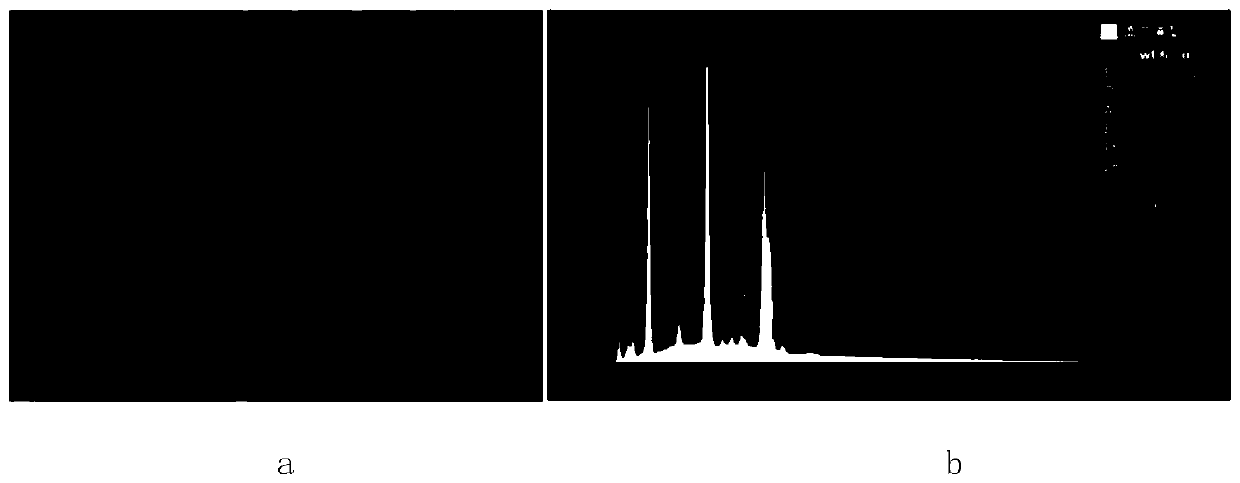Heat-conducting low-temperature co-fired ceramic material and preparation method thereof
A technology of low-temperature co-fired ceramics and alumina ceramic powder, which is applied in the field of thermally conductive low-temperature co-fired ceramic materials and its preparation, can solve the problems of inability to obtain thermally conductive products, restrict the scope of application, and poor thermal conductivity of products, and achieve Low cost, simple process, improved thermal conductivity and dielectric properties
- Summary
- Abstract
- Description
- Claims
- Application Information
AI Technical Summary
Problems solved by technology
Method used
Image
Examples
Embodiment 1
[0047] In step 1, the molar ratio of bismuth trioxide, boron oxide, silicon oxide, zinc oxide and aluminum oxide is 1:0.1:0.2:0.5:0.2, and the mixture is obtained. Then the mixture was melted at 900°C, and quenched with water to obtain Bi-based glass slag.
[0048] In step 2, the Bi-based glass slag is ball-milled into Bi-based glass powder with a particle size of 360nm. This was then mixed with alumina ceramic powder having a particle diameter of 2 μm to obtain a mixed powder.
[0049]Step 3: Firstly, according to the weight ratio of Bi-based glass powder, solvent and dispersant in the mixed powder as 1:0.1:0.1, the mixed powder, solvent and dispersant are jointly ball milled for 2 hours; wherein, the solvent is ethanol, and the dispersed The agent is castor oil to obtain a uniformly dispersed slurry. Then according to the ratio of Bi-based glass powder, binder, plasticizer and leveling agent in the uniformly dispersed slurry, the weight ratio is 1:0.05:0.2:0.005, for the u...
Embodiment 2
[0052] In step 1, the molar ratio of bismuth trioxide, boron oxide, silicon oxide, zinc oxide and aluminum oxide is 1:0.3:0.16:0.63:0.15, and the mixture is obtained. Then the mixture was melted at 975°C, and quenched with water to obtain Bi-based glass slag.
[0053] In step 2, the Bi-based glass slag is ball-milled into Bi-based glass powder with a particle size of 370nm. This was then mixed with alumina ceramic powder having a particle diameter of 1.8 μm to obtain a mixed powder.
[0054] Step 3: First, according to the weight ratio of Bi-based glass powder, solvent and dispersant in the mixed powder in a ratio of 1:0.5:0.078, the mixed powder, solvent and dispersant are jointly ball milled for 4.5 hours; wherein, the solvent is ethanol, The dispersant is castor oil to obtain a uniformly dispersed slurry. Then according to the weight ratio of Bi-based glass powder, binder, plasticizer and leveling agent in the uniformly dispersed slurry is 1:0.063:0.18:0.016, the uniforml...
Embodiment 3
[0057] In step 1, the molar ratio of bismuth trioxide, boron oxide, silicon oxide, zinc oxide and aluminum oxide is 1:0.6:0.13:0.75:0.1, and the mixture is obtained. Then the mixture was melted at 1050°C, and then quenched with water to obtain Bi-based glass slag.
[0058] In step 2, the Bi-based glass slag is ball-milled into Bi-based glass powder with a particle size of 380nm. This was then mixed with alumina ceramic powder having a particle diameter of 1.5 μm to obtain a mixed powder.
[0059] Step 3, according to the weight ratio of the Bi-based glass powder, solvent and dispersant in the mixed powder is 1:1.05:0.055, the mixed powder, solvent and dispersant are jointly ball milled for 7 hours; wherein, the solvent is ethanol, dispersed The agent is castor oil to obtain a uniformly dispersed slurry. Then according to the weight ratio of Bi-based glass powder, binder, plasticizer and leveling agent in the uniformly dispersed slurry is 1:0.075:0.15:0.028, the uniformly dis...
PUM
| Property | Measurement | Unit |
|---|---|---|
| Particle size | aaaaa | aaaaa |
| Particle size | aaaaa | aaaaa |
| Particle size | aaaaa | aaaaa |
Abstract
Description
Claims
Application Information
 Login to View More
Login to View More - R&D
- Intellectual Property
- Life Sciences
- Materials
- Tech Scout
- Unparalleled Data Quality
- Higher Quality Content
- 60% Fewer Hallucinations
Browse by: Latest US Patents, China's latest patents, Technical Efficacy Thesaurus, Application Domain, Technology Topic, Popular Technical Reports.
© 2025 PatSnap. All rights reserved.Legal|Privacy policy|Modern Slavery Act Transparency Statement|Sitemap|About US| Contact US: help@patsnap.com


